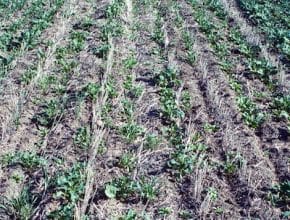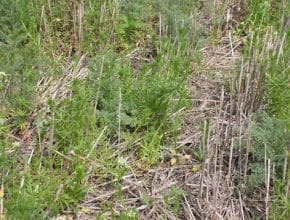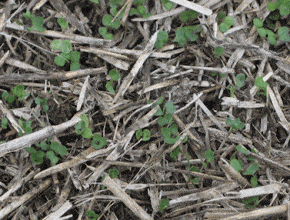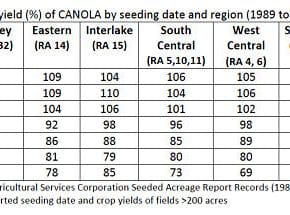If a grower decides to try something new, find a uniform field, try one product at a time and leave an untreated check, ensuring both treated and untreated areas are accurately measured for final yield and grade so a true economic comparison can be made. In reality, some products may provide a good payoff for the price, but that payoff…
Canola Watch Posts
-
-
Some air drills can cause costly levels of seed damage if the fan speed is too high. Cracked seed will not germinate. Inspect the quality of seed in the tank to make sure the loading auger isn’t causing the damage. Next, use the sock test (watch the video above) to check the state of seed as it exits the opener…
-
Contact with an overhead power line can result in a serious or even fatal injury. Protect yourself, your family, and those who visit and work on your farm. Start by taking inventory of the power lines in your yard and along the roads to your fields. Make it a habit to look up before you begin any job and ensure…
-
With the late start, the benefits of careful seed placement still apply — and perhaps more than ever. Taking an extra day or two at seeding to create a uniform well established canola field may save up to a week at harvest as these crops tend to mature earlier than spotty crops with low plant counts. Canola establishment also depends…
-
-
A pre-seed burnoff will result in higher yields versus no pre-seed burnoff. Seeding can begin fairly soon after a burnoff. For annuals and winter annuals, glyphosate needs only 24 hours to get to the growing point. After a day, the crop can be seeded. For perennial weeds, 3 days should be enough in sunny and warm conditions but 5 days…
-
Hit these volunteer canola plants when they're small with a pre-seed burnoff. Volunteer canola is a weed and competes with the crop for nutrients and water and sunlight. Volunteers do not have seed treatment, so they can introduce seedling diseases and increase flea beetle pressure. Also, volunteers in non canola years provide a host for blackleg, clubroot and insects, reducing…
-
Nufarm provides the following tips for CleanStart ahead of canola…
-




